#karin olafsson
Explore tagged Tumblr posts
Text
I think that's the last preliminary. I'll leave the submission form open until the Maleeni poll ends, but already start working on matchups.
Propaganda submissions will be open for the entirety of the tournament, but character submissions will officially close in a week.
Current list of competitors below (copied directly from google sheets, actual polls will be proofread):
Alfred Fellig
Amina Ngebe
Ariel Weiss/Luria
Augustus Cole
Bambi Berenbaum
Betsy Monroe
Betty
Big Mike
Bill Patterson
Billy LaBonge & Albert Pinchbeck (in prelims)
Blaine Faulkner
Carla Stonecypher & Michael Kinsley (in prelims)
Chantara Gomez
Cher
Chinga
Clyde Bruckman
Daryl Mootz
Daryl Musashi
Detective Glen Chao
Dorothy Bahnsen
Dr Alexander Ivanov
Dr Chester Ray Banton
Dr. Blockhead
Dr. John Rietz
Edy & Steve (in prelims)
Emil
The Eves (in prelims)
Flukeman
George Vincent
Henry Weems
Herman Pinchbeck
Holly McClain
Holman Hardt
Invisgoth
Jade Blue Afterglow
Jay "Boom" DaBoom
Jeff Glaser
Jenn
Jose Chung
Josh Exley
Karin Berquist
Kim Hsin
Lauren
Luther Lee Boggs
Lyda & Maurice (in prelims)
Madame Zirinka
The Men in Black (in prelims)
Margi Kleinjan & Terri Roberts (in prelims)
Martin Wells
Michael Holvey
Michel
Nurse Owens
Olafsson
Opponent
Owen Jarvis
Pam
Patrick Crump
Phoebe (FPS)
Phoebe Green
Phyllis H. Paddock
Reggie
Richie Lupone
Ronnie Strickland
Samuel Hartley
Sheila Fontaine
Sheriff Hartwell
Sheriff James Hamilton
Tea Leoni
The Conundrum
The Hard Faced Man
Triangle-verse!CSM
Triangle-verse!Scully
Triangle-verse!Skinner
If you have a favorite one-off character not here, submit them now!
0 notes
Text
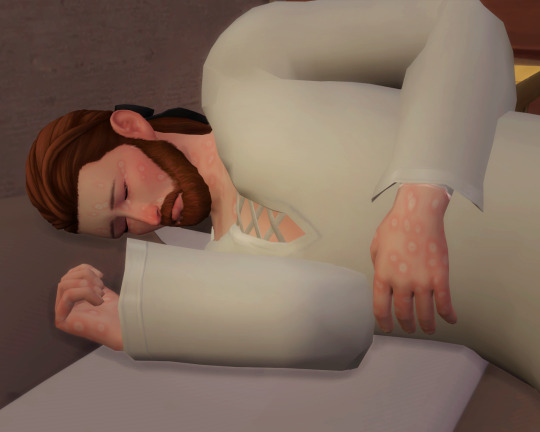
In the spring of 1764 a deadly disease reached Åland's shores.
Outbreaks of smallpox was spreading through Sweden and Finland, and soon enough it had reached Åland too.
The first member of the extended Olafsson family to fall ill was Viola's husband Abraham.
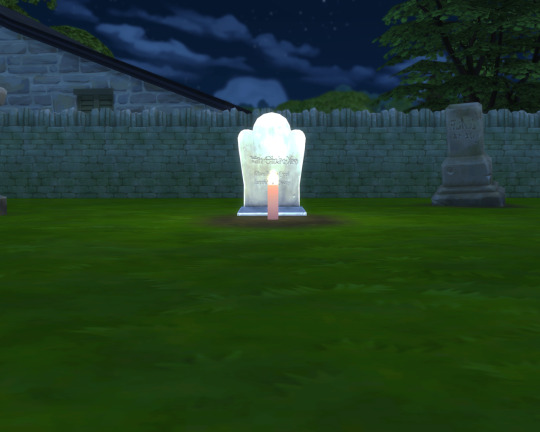
The disease was merciless, and within two weeks he was dead.
He was one of the first to be buried that year due to smallpox at the village cemetary. He would not be the last.
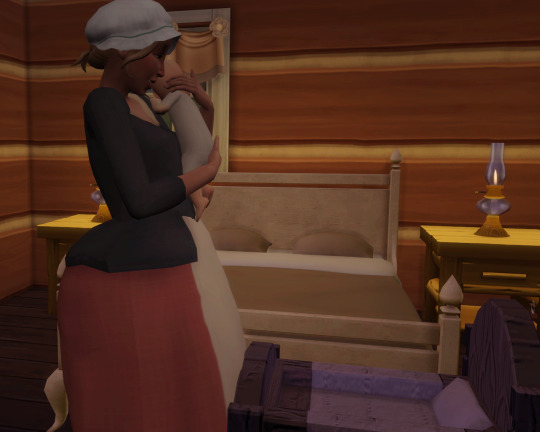
His death was expetionally cruel, as he and Viola had only a few months earlier had a daughter named Victoria.
Thankfully the infant somehow escaped the clutches of the illness.
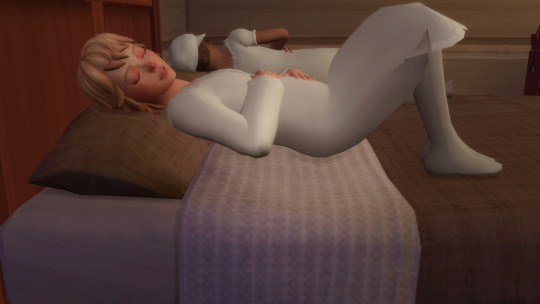
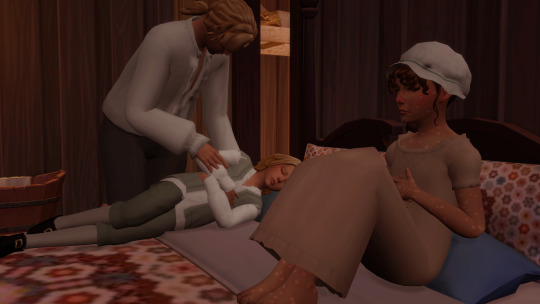
Shortly after Abraham's funeral both Rosalida and Josef's children became ill from smallpox.
It took a huge toll on the children, and Rosalida lost one of her sons, Samuel, to the disease. Thankfully the rest of the children survived.

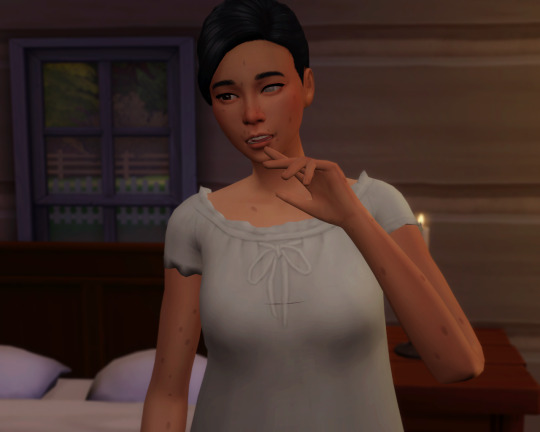
Further away the illness was rampaging through Jonas's village as well, and him, his wife and oldest son all fell ill from the disease.
They survived, although Jonas' wife was permanently blinded in one eye.
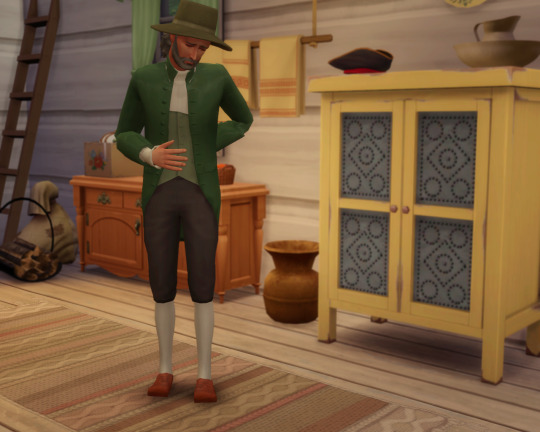
At the same time as the illness rampaged through Théodora's extended family, not too long after Abraham's funeral, Markus began to feel poorly.
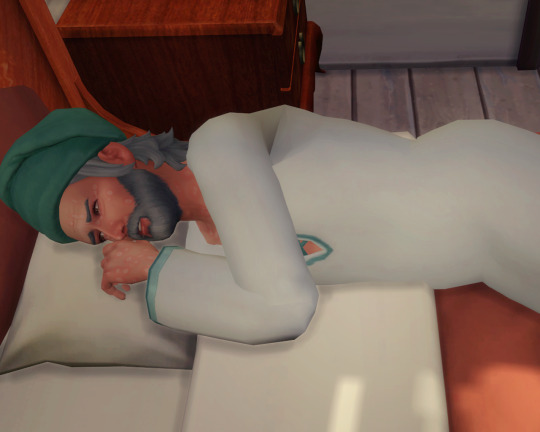
Everyone's fears came true when the telltale signs of smallpox began to erupt against his skin, and he was soon bedridden from the disease.
After killing many all around the islands, smallpox had arrived at the Park family's doorstep.
.
.
Historical Info
A note: I didn't plan for this to come out around the same time as the world is having outbreaks of monkey pox (historically in 1764 & -65 Åland suffered outbreaks of smallpox), and I hope everyone is safe and okay.
---
Smallpox, smallpox, smallpox.... What is there to say of smallpox?
Well, a lot as it turns out.
Smallpox was a horrific disease that has killed millions of people throughout history.
I'll try to keep the gory details to a minimum, but if you've got a strong stomach then I recommend this video which explores the symptoms of smallpox in closer detail than I will be doing here.
Smallpox was a highly infectious disease that has plagued humanity for thousands of years.
The earliest evidence of it was found on mummies from 3rd century BCE in Egypt, and it was declared eradicated in 1980. So it was around for a while.
Smallpox typically began with fever, back and muscle aches, headaches and vomiting and nausea. Shortly after the first symptoms appear the affected will start to develop raised, pus-filled spots (aka pustules) with a crater-like indent in the middle. Typically the pustules first start in the mouth, and can spread into the throath and nose of the sick.
About 3 in 10 people who got smallpox died, and those who survived would develop pitted scars (pockmarks) and sometimes become infertile or blind.
It was more common for children and babies to succumb to the disease, but older people definitely got sick and died too. All in all the disease was horrific and merciless, and it's a huge relief that we've eradicated it.
In my next post the historical info will examine how people tried to treat smallpox at the time.
#300 years challenge#sims 4 decades#sims 4 legacy#sims 4 historical#olafssons#gen 3#jonas olafsson#karin olafsson#josef olafsson#anna olafsson#johannes olafsson#viola olafsson#victoria nilsson#ts4 decades#ts4 legacy#ts4 historical#simblr
21 notes
·
View notes
Text
Norwegian / old norse names and places
Every now and then I come across a book, movie, TV-series, fanfic, game or whatever, that mention a fictional "Norwegian" or "norse" place or person, and it just sounds so wrong it makes me either cringe or ROFL. Really. I still haven't recovered from the 1995 X-files episode, "Død Kalm", which took us to the port of "Tildeskan" where we met "Henry Trondheim", "Halverson" and "Olafsson". Hopefully this list will keep others from being that “creative” with names. :)
Common names for places, towns and villages in Norway
These names are very generic and suitable for a place, village or town anywhere (and pretty much any time) in Norway. Mix and match prefixes with suffixes for diversity. Bonus: All of these can also be used as surnames. Name (meaning) - usage
Nes (headland, cape, ness) - Standalone Bø (fenced-in field on a farm) - Standalone Fjell (mountain) - Standalone or prefix/suffix: Fjell- / -fjell Haug (small hill / large mound) - Standalone or prefix/suffix: Haug- / -haug Vik, Viken, Vika (inlet, the inlet, the inlet) - Standalone or prefix/suffix: Vik- / -viken / -vika Ås, Åsen (hill, the hill (larger than "Bakken")) - Standalone or prefix/suffix: Dal, Dalen (valley, the valley) - Standalone or prefix/suffix: Berg (small mountain) - Standalone or prefix/suffix: Berg(s)- / -berg Sand (sand) - Standalone or prefix/suffix: Sand- / -sand Strand (beach) - Standalone or prefix/suffix: Strand- / -strand Li (hill) - Standalone or prefix/suffix: Li- / -li Gran (spruce) - Standalone or prefix: Gran- Bratt (steep) - prefix only: Bratt- Myr (bog, mire) - prefix only: Myr- Neset, Nesset (the headland, the cape, the ness) - Standalone or suffix: -neset / -nesset Odden (foreland, headland) - Standalone or suffix: -odden Våg (cove, bay) - Standalone or suffix: -våg Lund (grove) - Standalone or suffix: -lund Sund (sound, strait) - Standalone or suffix: -sund Skog (forest) prefix/suffix: Skog- / -skog Øy (island) prefix/suffix: Øy- / -øy øya (the island) - suffix only: -øya bakken (the hill) - suffix only: -bakken gard / gård / gården (farm / farm / the farm) - suffix only: -gard / -gård / -gården elv, -elva (river, the river) suffix only: -elv / -elva stad (old word for town/place) suffix only: -stad vannet (the lake) - suffix only: -vannet
Common words that can be used as prefix to any of the suffixes above Svart- (black) Lille- (little/small) Sol- (sun) Brei-/Bred- (wide) Stor- (big) Lang- (long)
Common Norwegian surnames (contemporary)
Heredatory surnames didn't become mandatory in Norway until 1923. Many took the name from the farm or place they lived, or just changed their primary patronyms into hereditary patronyms. Example: Helgessønn/Helgesdatter (son of Helge / daughter of Helge) became Helgesen.
Alm Andersen Anderssen Antonsen Aspelund Bakke Bakken Bang Berg Bjerkan Bråthen Christensen Corneliussen Dahl Dahlberg Danielsen Dyrnes Dørum Eide Ellingsen Erdal Eriksen Falch Fredriksen Foss Fure Fylling Gabrielsen Gran Grønning Halvorsen Hansen Hanssen Hay Hoff Holm Holt Husby Isaksen Iversen Jacobsen Jensen Jenssen Johansen Karlsen Klausen Konradsen Kristensen Kristiansen Larsen Larssen Lie Lien Lund Løvold Magnussen Meyer Mikalsen Mo Moen Myhre Myklebust Mørk Ness Nilsen Olavsen Olsen Paulsen Pettersen Prestegård Rasmussen Riise Rogstad Ruud Simonsen Solbakken Solli Stokke Strøm Sund Svendsen Thorvaldsen Torp Thune Tønnesen Ueland Ulven Urdal Vik Vinje Wahl Wik Wilhelmsen Zakariassen Ødegård Årseth Årvik Ås, Aas Åsen, Aasen
Common Norwegian names -- 1980 - present
Men
Anders André Andreas Are Arne Atle Bjørn Cato Chris Christian, Kristian Christoffer, Kristoffer Daniel David Dennis Elias Emil Espen Erik, Eric Eirik Fredrik Filip Geir Harald Helge Hans Henning Håkon, Haakon Håvard Isak Jan Joachim Johan Johannes John, Jon Johnny Jonas Jonathan Kim Kristian, Christian Kristoffer, Christoffer Lars Lucas, Lukas Mads, Mats Magnus Martin Michael, Mikael Morten Niklas Nils Odin Ole Ove Paul Per Peter, Petter Preben Pål Richard, Rikard Roger Sebastian Simen Simon Sindre Sondre Stian Terje Thomas Thor, Tor Thore, Tore Vegard Werner William Øystein Åge Åsmund
Women
Andrea Ane, Anne Anette, Annette Annika, Anniken Astrid Bente Camilla Carina Cathrine Celine Charlotte Christin, Kristin Christina, Kristina Christine, Kristine Elin, Eline Elise Elisabeth Emilie Eva Frida Grete, Grethe Hanne Hege Heidi Helene Hilde Ida Ine Ingrid Ingvill, Ingvild Isabel, Isabell, Isabelle Iselin Jannicke Janine Jeanette Jennie, Jenny Julia, Julie Karoline (Kine) Katrin, Katrine Kristin, Christin Lea, Leah Lena, Lene Linda Line Linn Linnea Lise, Lisa Liv, Live Mai, May Maja Malin Margrete, Margrethe Mari, Maria, Marie Mariann, Marianne Marte, Marthe Mette Monica Nina Nora Oda Pia Ragnhild Randi Rikke Sara, Sarah Silje Siv Stina, Stine Susann, Susanne Tanja Tina, Tine Tiril Tone Trine Vilde Vera Veronica Wenche Åse Åshild
Common Norwegian names - 1800 - 1980
Men Aksel Albert Anders Andreas Anker Ansgar Arne Arnt Arve Asle Atle Birger Bård Charles Edmund Edvard Egon Erling Even Fred Fredrik Frode Geir Georg Gunnar Gunvald Gustav Harald Helge Hilmar Håkon, Haakon Ivar Ingvar Jens Jesper Jørgen Joakim Karl Karsten, Karstein Kjell Klaus Kolbein Kolbjørn Kristian Kåre Lars Lavrans Leif Lossius Ludvig Magne Magnus Nikolai Nils Odd Oddvar Odin Ola Olai Olaf Olav Ole Omar Oscar, Oskar Peder Per Petter Philip, Phillip Pål Ragnar Rikard Roald Roar (also Hroar) Rolf Rune Sigurd Sigvard, Sigvart Simon Svein Sverre Tarjei Terje Toralf, Thoralf Torbjørn, Thorbjørn Torleif, Thorleif Torstein, Thorstein Torvald, Thorvald Trond Ulf Ulrik Valdemar Wilhelm Willy Åge
Women
Albertine Alice, Alise Alma Anita Anna Annbjørg Asbjørg Astrid Aud Bente Berit Birgit Birgitte Bjørg Bjørgun Bodil Borghild Dagny Dagrun Edel Ella Ellen Elsa Fredrikke Frida Gerd Gjertrud Gunhild Gyda Hanna, Hannah Helga Henny Herdis Hilda Hilde Hjørdis Ingeborg Inger Irene Johanna, Johanne Jorun, Jorunn Josefine Judith Kari Karin Kirsten Kitty Kjersti Laila Lilli, Lilly Lisa, Lise Liv Lovise Mathilde Margaret Marit Martha Molly Nanna Oddrun Oddveig Olga Ragna Ragnhild Rigmor Sara Signe Sissel Solbjørg Solveig Solvår Svanhild Sylvi Sølvi Tora Torhild, Toril, Torill Torun, Torunn Tove Valborg Ylva Åse Åshild
Names usage Double names, like Ragnhild Johanne or Ole Martin are common in Norway. Just keep them as two names and don't use "-", and you'll be safe, even if it ends up a tongue twister. Using only one of two given names is also common practice.
In Norway everyone is on a first name basis. Students call teachers and other kids' parents by their first name, workers call their boss by their first name, we call our Prime Minister by her first name (journalists will use her title when speaking to her though). Some senior citizens still use surnames and titles when speaking of or to people their own age.
There are some exceptions. For example, a doctor may be referred to as Dr. Lastname when we speak of them, but first name is used when speaking to them. A priest is "the priest" when speaking of him/her and their first name is used when spaking to them. In the millitary only surnames (and ranks) are used. If you meet Harald, the King of Norway, in an official setting you will refer to him as "Kongen" (the king). If you run into him at the gas station, or while hiking, he is "Harald".
If you don't know someone's name it is okay to use their title, or just say "you".
Names for pets (contemporary)
Dogs Laika (f) Bamse (m) (bear) Tinka (f) Loke/Loki (m) + characters from TV/film/books...
Cats Melis (m/f) (powdered sugar) Mango (m/f) (mango) Pus (f) (kitty) Mons (m) (tomcat) Nala (f) Pusur (m) (Garfield) Felix (m) Simba (m) + characters from TV/film/books...
Horses Pajazz (m) Mulan (f) Balder (m) - cold blood Kompis (m) (pal) Freya (f) - cold blood + characters from TV/film/books...
Rabbits Trampe (m) (Thumper) Trulte (f) + characters from TV/film/books...
Cows (yes, I am serious) Dagros Rosa Mira Luna Sara + characters from TV/film - Disney is popular, as are the Kardashians :)
Road and street names
Storgata (usually the main street) Kongens gate (the king's street) Dronningens gate (the queen's street) Jernbanegata (railroad street) Jernbaneveien (railroad road) Sjøgata (ocean street) Sjøveien, Sjøvegen (ocean road) Skolegata (school street) Torvgata (plaza street) Industrigata (industrial street) Industriveien (industrial road)
Prefixes Blåbær- (blueberry) Bringebær- (raspberry) Bjørke- (birch) Aspe- (asp) Kastanje- (chestnut) Solsikke- (sun flower) Blåklokke- (blue bell) Nype- (rosehip) Kirke- (church) Park- (park)
Suffixes -veien, -vegen (the road) -stien (the path)
Other Torvet (the plaza) - standalone or suffix: -torvet Havna (the port) - standalone or suffix: -havna Kaia (the port) - standalone or suffix: -kaia
Safe solution: use a first name or surname as prefix.
Old norse
Men���s names Agnarr (Agnar) Alfr (Alf) Ámundi (Amund) Ánarr Árngrimr (Arngrim) Askr (Ask) Auðun (Audun) Baldr (Balder) Beinir Bjørn Burr Borkr Dagfinnr (Dagfinn) Davið (David) Drengr Durinn Einarr (Einar) Eirikr (Eirik) Eivindr (Eivind) Erlingr (Erling) Fafnir Flóki Freyr (Frey) Fuldarr Galinn Gautarr (Gaute) Gegnir Geirr (Geir) Glóinn Grímarr (Grimar) Hafli Hakon Hallsteinn (Hallstein) Haraldr (Harald) Haukr (Hauk) Heðinn (Hedin, Hedinn) Helgi (Helge) Hrafn, Hrafni (Ravn) Hrafnkell (Ravnkjell) Iarl (Jarl) Ingolfr (Ingolf) Iuar (Ivar) Jafnhárr Jón Jóngeirr Kál Kiaran Klaus Knútr (Knut) Kolgrimr (Kolgrim) Kolr (Kol) Leifr (Leif) Loki Lyngvi Magnus Mikjáll (Mikal, Mikkel) Mór Morði Nesbjørn Nokkvi Oddr (Odd) Oddbjørn Oðin (Odin) Olafr (Olaf) Ormr (Orm) Otr Ouden Pálni Pedr Ragnarr (Ragnar) Ragnvaldr (Ragnvald) Randr (Rand) Róaldr (Roald) Rólfr (Rolf) Salvi Sigarr (Sigar) Sigbjørn Sigurðr (Sigurd) Skarpe Snorri (Snorre) Steinn (Stein) Sveinn (Svein) Teitr Þor (Thor/Tor) Þórbjørn (Thorbjørn/Torbjørn) Þorsteinn (Thorstein/Torstein) Tryggr (Trygg) Týr Ulfár Ulfheðinn (Ulvhedin) Ulfr (Ulf) Vakr Vani Veigr Viðarr (Vidar) Yngvarr (Yngvar) Æsi
Women's names
Anna Arnfriðr (Arnfrid) Ása Bera Bergdís (Bergdis) Biørg (Bjørg) Cecilia Cecilie Christina Dagný (Dagny) Dagrún (Dagrun) Dís Dísa Edda Elin Ellisif (Ellisiv) Freyja (Freya) Friða (Frida) Frigg Gerðr (Gerd) Gertrud Grima Gyða (Gyda) Hadda Hallbéra Hallkatla Herdís (Herdis) Hildigunnr (Hildegunn) Huld Hvít Ida Iðunn (Idun, Idunn) Ingríðr (Ingrid) Johanna Jórunn (Jorun, Jorunn) Juliana Katla Katrine Kristín (Kristin) Leikný (Leikny) Lif (Liv) Magnhildr (Magnhild) Mjøll Myrgiol Nál Nanna Nótt Oda Oddný (Oddny) Ólaug (Olaug) Rafnhildr (Ragnhild) Rán Rannveíg Ríkví (Rikvi, Rikke) Rúna (Runa) Roskva Sága (Saga) Sif (Siv) Sigriðr (Sigrid) Skaði (Skadi) Skuld Svana Sýn Solveig Tekla Tóra (Tora) Trana Ulfhildr (Ulfhild) Una Urðr (Urd) Valborg Vigdís (Viigdis) Vírún Yngvildr (Ingvill, Ingvild) Yrsa
Bynames Bynames, or nicknames, could be neutral, praising or condescending. Usually bynames described a person's
body, bodyparts, bodily features
age
kinship and descent
territorial origin
knowledge, belief, spirituality
clothing, armour
occupation, social position
nature
Examples: Eirik Blodøks (Eirik Blood-Axe), Gammel-Anna (old Anna), Halte-Ása (limping Ása). I suggest that you stick with English for bynames, or use (relatively) modern language if you are writing in Norwegian.
Surnames
Surnames weren't really a thing until 1923 when they became mandatory. Before 1923 patronyms (son/daughter of) were used, and the name of the farm you lived on was often added as an address.
For instance: Helgi Eiriksøn (Helgi, son of Eirik), who lived at the farm called Vollr (grass field), would be called Helgi Eiriksøn Vollr. If he moved to the farm called Haugr his name would change to Helgi Eiriksøn Haugr.
Patronyms
Men: Use father's first name and add -sen /-son /-sønn Women: Use father's first name and add -dotter / -dottir / -datter
Farm names
Farm names were usually relevant and derived from either the location, a nearby landmark, nature or from occupation. I suggest you stick with the modern forms for farm names.
Old Norse (meaning) - modern Bekkr (stream) - Bekk, Bekken Dalr (valley) - Dal, Dahl Horn (horn) - Horn Vollr (field) - Vold, Volden Lundr (grove) - Lund
The list of common names for places/villages/towns is still valid, although the spelling is modern. Just keep it simple and make "clever" combos based on meaning.
544 notes
·
View notes
Text

In 1752 it was time for Ulf's 30th birthday, an occassion that warranted a party for the whole family.
Everyone was invited, even Jonas and his family traveled over to the farm for the birthday.

The weather was a bit rainy, and as such the entire extended family crammed themselves into the house for the day, inevitably ending up with everyone grouping off into various rooms of the house since it was impossible to fit otherwise.
Enjoying the slight chaos Ulf sat down with some br��nnvin, an alcoholic drink that Signhild had made using potatoes from the farm, and listened peacefully to his family.

At the furthest end of the dinner table was Jonas' son Karl, who had recently turned 5. He was a bit soft spoken and shy but seemed to be having a great time joking together with Constantine.

Closer to Ulf was his brothers' wives Karin and Emma who were busy talking about their families.

Karin and Jonas had recently welcomed a new daughter to the family in the winter of 1751 who they had named Helga.
These news were warmly welcomed by the rest of the family, who began joking that all the children born in '51 ought to band together once they're older.
Emma was also happy to share that she was fairly certain she was expecting her and Josef's first child, giving even more excitement and joy to the family. .
.
.
Historical Info
Brännvin was something often made in most households and drunk during celebrations and parties (source in Swedish)
In 1746 a woman called Eva de la Gardie found a way to make the alcohol using potatoes, which gave the potato a new impression among the Swedish population.
Before this potatoes had been mostly used to make powders and starch, but now they could use it for alcohol too.
This, I imagine, was a much more popular application of the vegetable at the time, especially among the poorer populations given that potatoes are rather easy to grow.
#300 years challenge#sims 4 legacy#sims 4 decades#sims 4 historical#olafssons#gen 2#ulf olafsson#karin olafsson#emma olafsson#karl olafsson jr#constantine olafsson#helga olafsson#ts4 decades#ts4 legacy#ts4 historical#simblr
13 notes
·
View notes
Text

One day Jonas came to visit his family in order to announce the news that he was engaged to marry.

He had fallen for the daughter of the family he worked for years ago, and all this time a romance had blossomed between them.
Now, at 19, he was firm in his belief that he was ready to take the next step in his relationship and get married. Not only would he get to be with his sweetheart, he'd also become the head of the household that he used to work for.

Ingmar was delighted at the news. Though this would mean Jonas would never be coming back he was still happy to know that his son had done so well for himself and that despite the distance they could always visit.

In the fall of 1746 Jonas Olafsson, 19, married Karin Holm, 20.

Everyone in the family traveled over to celebrate the wedding with Jonas.
They were so happy to see Jonas married and they all wished him a long, happy and loving marriage with Karin.



#300 years challenge#sims 4 legacy#sims 4 decades#sims 4 historical#olafssons#gen 2#jonas olafsson#karin olafsson#ingmar olafsson#ts4 decades#ts4 legacy#ts4 historical#simblr
17 notes
·
View notes
Text

In the autumn of 1755 Jonas & Karin had another baby, a daughter they named Karina.

And that winter Rosalida gave birth to twins: a boy named Ingmar and a girl named Ida.

That same year Vilhelm celebrated his 18th birthday.
He had grown into a tall young man who remained as gentle and hard-working as ever.
Signhild was immensely proud of him, although she was heartbroken that Ingmar never got to see Vilhelm turn 18.

The family held a large gathering to celebrate Vilhelm, and during the festivities it just so happened that Josef, Jonas and Ulf sat down to talk.

Josef had a proposition for the two.
He suggested that they all pitch in to buy a small boat that they could collectively use to ship wares over to Stockholm to sell.
Being a forester and woodcutter Josef sold a lot of wares to Stockholm, but the cost of ferrying everything over was high and he was growing sick of having to lose such a large share of the income every time.
This way the three brothers could all forego the cost to pay someone to ship wares over, and instead be able to make more money all together.

Seeing no downsides to the matter they all agreed to go through with it, and Jonas offered to be the one to keep and take care of the boat when the others weren't using it, seeing as how he lived closest to the shore.
.
.
.
Historical Info
This is an interesting piece of information that I learned while reading a book on this time period.
Seeing as how Åland is a group of islands in the middle of the baltic sea the people living on it were very dependent on the sea and sea routes.
Aside from a postal sea route that went between Sweden, Åland and Finland the people on Åland had to make their own way around.
While there was some trade between Åland and the city of Turku in Finland, it was much more common for the Åland people to travel to Stockholm to trade.
Often they would travel over in their own boats (or have to pay someone to take their wares over) to Stockholm in order to sell firewood, fish, cheese, butter, livestock and other wares they had produced over the year. The most common export was firewood and fish above all.
Since boats are expensive to buy and maintain it was common practice for the ownership of one boat to be split between several people, commonly 2-3 people in total.
The boats themselves were a type of boat known as a "skuta" in Swedish, which often had two masts and, as time went on, a small cabin in which people could eat and sleep.

Alexander Wetterling (1796-1858). "En del af Södra Hamnen öst från Lutfiskggangen d . 16 apr. 1826."
Source: Det Åländska Folkets Historia Vol. III (The History of the Åland People Vol. III) by Stig Dreijer
Also an additional non-historical fun fact is that I once steered a more modern incarnation of a "skuta" for a brief time as a child (under heavy supervision, but still!) :) It was heavy work and really tiring, but also pretty fun.
#300 years challenge#sims 4 decades#sims 4 legacy#sims 4 historical#olafssons#gen 2#ulf olafsson#karin olafsson#karina olafsson#rosalida olafsson#ingmar bryggare#ida bryggare#jonas olafsson#josef olafsson#ts4 decades#ts4 legacy#ts4 historical#simblr#vilhelm olafsson
15 notes
·
View notes
Text

Ingmar Olafsson was buried next to his late wife Alida, a decision all of his children insisted upon despite his second marriage to the now widowed Signhild.



Rosalida's wedding celebrations were cut short several days early to prepare for the funeral, which was able to be held very soon after Ingmar's passing due to a warm winter.
Thanks to everyone having traveled over for Rosalida's wedding all of Ingmar's children and grandchildren were able to attend the funeral and say farewell to him.


#300 years challenge#sims 4 legacy#sims 4 decades#sims 4 historical#olafssons#gen 2#ingmar olafsson#ulf olafsson#théodora olafsson#constantine olafsson#karl olafsson jr#jonas olafsson#karin olafsson#josef olafsson#ts4 decades#ts4 legacy#ts4 historical#simblr
15 notes
·
View notes